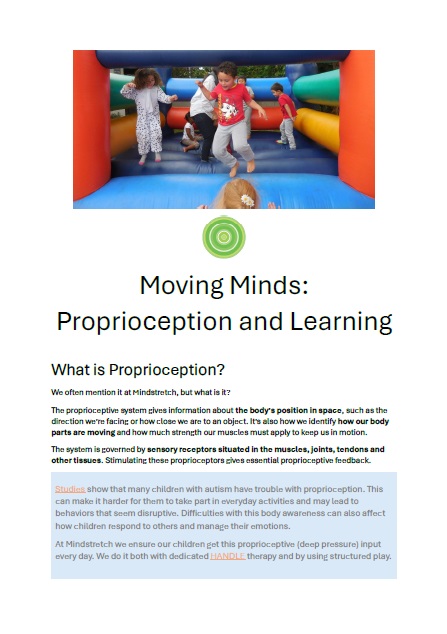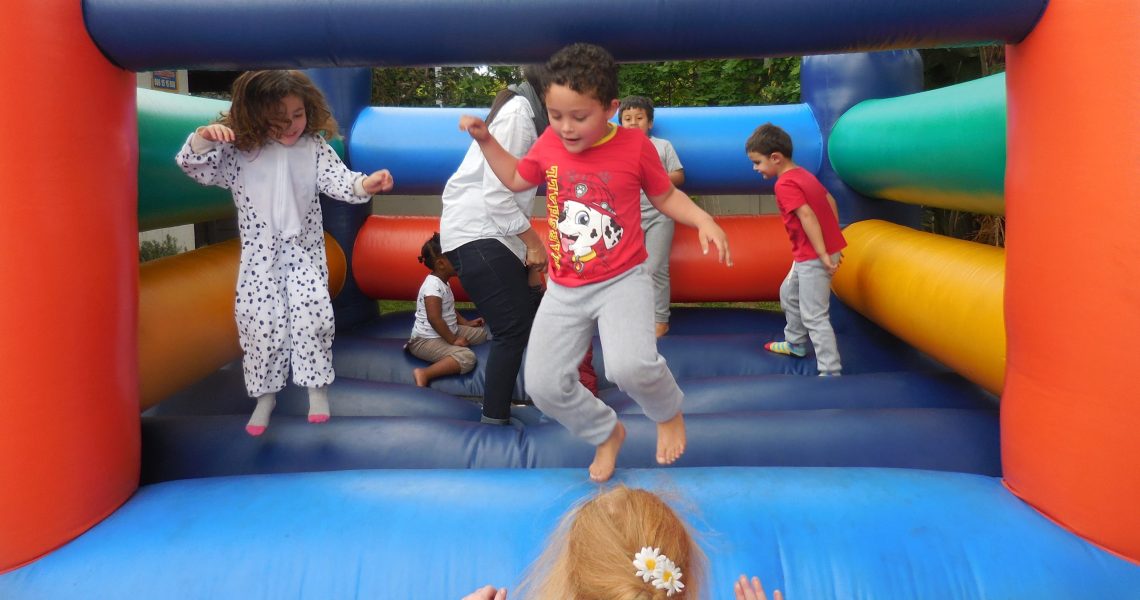What is Proprioception?
We often mention it at Mindstretch, but what is it?
The proprioceptive system gives information about the body’s position in space, such as the direction we’re facing or how close we are to an object. It’s also how we identify how our body parts are moving and how much strength our muscles must apply to keep us in motion.
The system is governed by sensory receptors situated in the muscles, joints, tendons and other tissues. Stimulating these proprioceptors gives essential proprioceptive feedback.
Studies show that many children with autism have trouble with proprioception. This can make it harder for them to take part in everyday activities and may lead to behaviors that seem disruptive. Difficulties with this body awareness can also affect how children respond to others and manage their emotions.
At Mindstretch we ensure our children get this proprioceptive (deep pressure) input every day. We do it both with dedicated HANDLE therapy and by using structured play.
For proprioceptive input we seek deep pressure stimulation with activities that let our children pull, push, lift, jump, stomp, roll, or squeeze.
The Benefits are Essential and Wide-Ranging
✓ Aids body awareness
✓ Plays a role in self-regulation
✓ Helps coordination
✓ Highly calming for children
✓ Helps posture
✓ Helps speech development
✓ Helps to focus a child
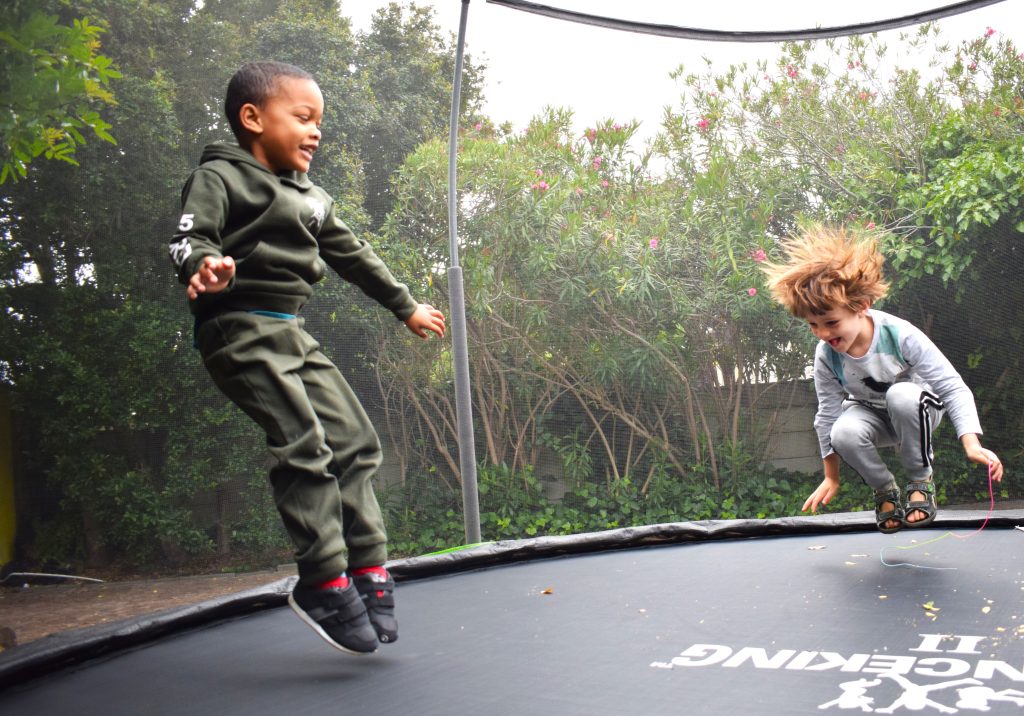
Signs a Child May Need Proprioceptive Input
- Bites or chews on objects, such as a sleeve, pencil or toy.
- Bangs body parts, such as banging hands together or banging their jaw with their hand.
- Grips objects with excessive pressure.
- Chooses to run, jump or stamp heavily when they should be walking.
- Seeks weightbearing activities, such as climbing or swinging on something.
- Enjoys rough and tumble play but can be excessively rough.
- Throws themselves heavily onto the floor.
- Hyperextends joints e.g. bending back fingers, locking knee joints.
- Walks on tiptoes (though there are other possible factors that may be linked to this gait pattern).
Giving Proprioceptive Input: Exercises Making it Fun
- Child Sandwich: Make a ‘child sandwich’ by piling heavy blankets onto your child for good compression. Or squish them in a folded mattress or roll them in a blanket and make a ‘wrap’. You can also firmly press on your child’s arms, legs and back with pillows.
- Ball Roll: If you have a gym ball, roll it over your child while they lie on the floor. Or exert pressure from above. At Mindstretch we find our children particularly enjoy this.
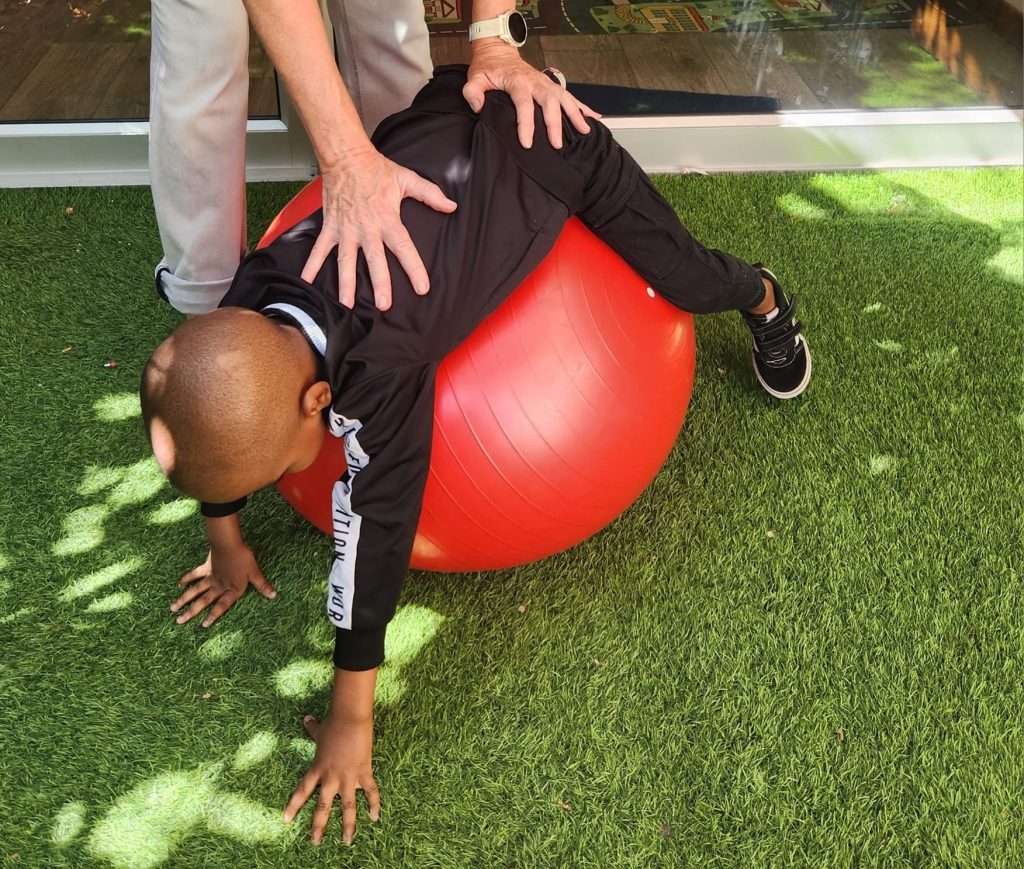
- Tug-of-War: Have the family play a game of tug-of-war. If your child needs to work up to it, first do the exercise while seated.
- Soft Landing Jump: Pile mattresses and cushions onto the floor, with a safe margin around them, and let your child jump (‘crash’) onto them from the surface of a firm couch or similar elevated object. They may need a hand held at first.
- Bite the Ring: If your child seeks oral input, have available your trusty biting ring or other object. Or use tough foods (diet- and age-dependent) such as dried fruit or an ice popsicle.
- Push the Object: Try to ‘push away the wall’. Any push or pull activity’s encouraged. Try pushing a pram or a little cart filled with weighted objects such as groceries.
- Stomp Like you Mean it: Cut out ‘puddles’ to stomp and jump on. Maybe use the opportunity to dress up in rainy day clothes for imaginary play. Or have them splash around in the real thing.
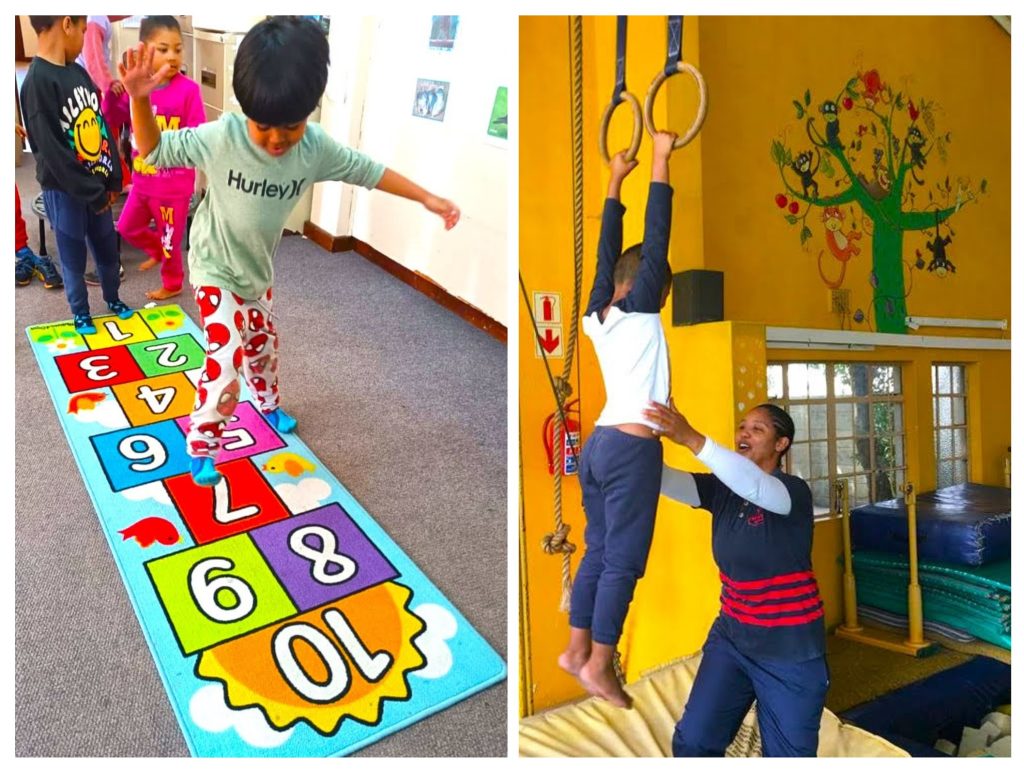
- Weighted Carry: Carry a heavy (but manageable) item, perhaps a bag of toys or shopping. Or use any special equipment you might have, such as a weighted jacket or squeeze machine. Or have your child wear a backpack filled with toys. The brain responds best to novelty. Use any weighted items for only 10–15 minutes.
Please ensure the items you give your child to lift, pull or push (or otherwise manipulate) are a manageable weight and size. The idea is to increase proprioceptive input, not body build!
At Mindstretch we include gross motor activities to stimulate the proprioceptive system every day.
PRINT COPY | Want a copy of this article for future reference? Download it here: Moving Minds: Proprioception and Learning
